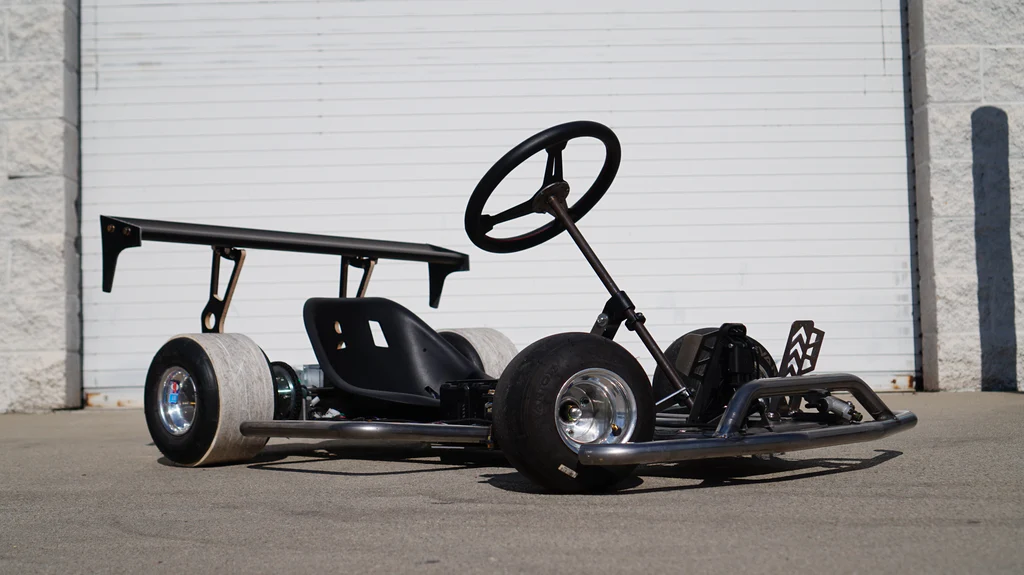The Adrenaline-Fueled World of Controlled Chaos on Four Wheels
The roar of engines, the smell of burning rubber, and the sight of karts sliding gracefully around corners at impossible angles—this is the electrifying world of drift kart racing. While traditional kart racing focuses on maintaining optimal grip and taking the racing line, drift karting flips the script entirely, celebrating the art of controlled sliding and precise counter-steering. This motorsport discipline has captured the imagination of racing enthusiasts worldwide, offering an accessible yet thrilling gateway into the broader world of drifting.
What Makes a Drift Kart Different?
A drift kart is specifically engineered to break traction and slide through corners rather than grip the track surface. Unlike standard racing karts that prioritize acceleration and cornering speed through maximum tire adhesion, drift karts are built with modifications that encourage the rear wheels to lose grip intentionally. These specialized machines typically feature harder rear tires or even PVC sleeves over the rear wheels, significantly reducing traction and making it easier to initiate and maintain a drift.
The chassis setup also differs considerably from traditional karts. Drift karts often have adjusted weight distribution, modified steering geometry, and sometimes even rear-wheel-only braking systems. These changes create a platform that rewards throttle control, steering precision, and the driver’s ability to balance the kart at the edge of adhesion. The result is a machine that feels alive beneath you, constantly demanding attention and finesse.
The Technical Art of Drift Karting
Mastering a drift kart requires developing a unique skill set that differs from conventional racing techniques. The fundamental concept involves initiating a slide by using weight transfer, throttle input, or steering angle, then maintaining that drift through the corner using counter-steering and precise throttle modulation. It sounds simple in theory, but the execution demands countless hours of practice and an intuitive understanding of vehicle dynamics.
Successful drift kart pilots learn to read the kart’s behavior through subtle feedback—the feeling of the rear end beginning to step out, the resistance through the steering wheel, and the engine’s response to throttle inputs. They develop lightning-fast reflexes to catch slides before they become spins, and they cultivate the smoothness necessary to link multiple corners together in one continuous, flowing drift. The best drivers make it look effortless, their karts dancing through corners with millimeter precision.
Why Drift Karting Is Growing in Popularity
The appeal of drift karting extends far beyond the obvious thrill factor. For many enthusiasts, it represents an affordable entry point into motorsports that doesn’t require a massive financial investment. Compared to drifting full-sized cars, drift karts are relatively inexpensive to purchase, maintain, and operate. They consume less fuel, require smaller venues, and have lower insurance costs, making the sport accessible to a broader demographic.
Additionally, drift karting serves as an excellent training ground for aspiring motorsport professionals. The skills developed while sliding a lightweight kart translate remarkably well to larger vehicles. Many professional drift car drivers credit their success to time spent in karts, where they learned car control fundamentals without the consequences and costs associated with crashing heavier vehicles. The low-speed nature of kart drifting also means crashes are typically minor, allowing drivers to push limits and learn from mistakes without significant risk.
The Social and Competitive Scene
The drift karting community has flourished in recent years, with dedicated tracks and events popping up across the globe. From grassroots parking lot sessions to organized competitions with judges and spectators, the social aspect of drift karting adds another dimension to its appeal. Drivers gather to share techniques, troubleshoot setup issues, and celebrate spectacular runs—creating a welcoming environment for newcomers and veterans alike.
Competitive drift karting follows judging criteria similar to full-scale drifting competitions. Judges evaluate runs based on line accuracy, drift angle, speed, and style. Tandem battles, where two drivers drift in close proximity through the same course, showcase the highest level of skill and create spectacular photo opportunities. These competitions have helped legitimize drift karting as a serious motorsport discipline while maintaining the fun, accessible atmosphere that defines the sport.
Getting Started in Drift Karting
For those interested in experiencing drift karting firsthand, the barrier to entry is refreshingly low. Many karting facilities now offer drift kart experiences where newcomers can try the sport under supervision without purchasing equipment. These sessions provide valuable insight into whether drift karting is right for you before making any financial commitment.
Those ready to dive deeper can explore building their own drift kart, either by modifying an existing racing kart or purchasing a purpose-built chassis. The online community offers extensive resources, including setup guides, technique tutorials, and forums where experienced drifters share knowledge freely. Local clubs and organizations provide structure for regular practice sessions and friendly competition.
The Future of Drift Karting
As drift karting continues to gain traction, the future looks bright for this dynamic motorsport. Innovations in kart design, the development of dedicated drift tracks, and increasing media coverage are all contributing to the sport’s growth. The combination of affordability, accessibility, and pure entertainment value positions drift karting as a gateway that will introduce countless new enthusiasts to the broader world of motorsports.
Whether you’re seeking an affordable racing hobby, looking to develop car control skills, or simply craving the unique thrill of controlled chaos, drift karting delivers an experience unlike any other in motorsports. The sideways revolution is here, and it’s more accessible than ever before.



